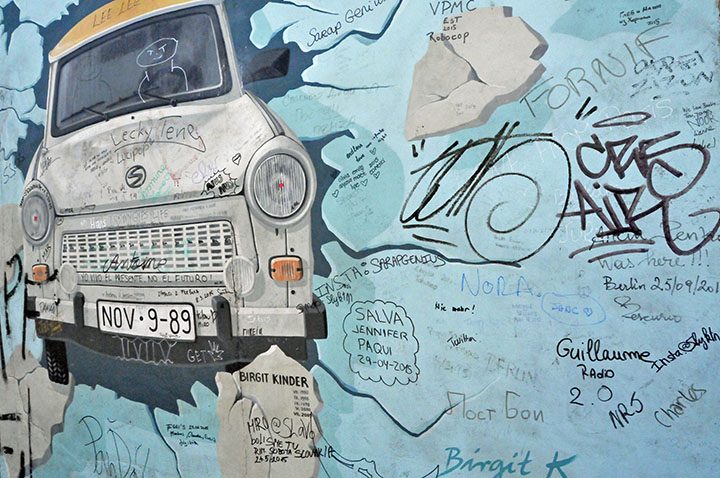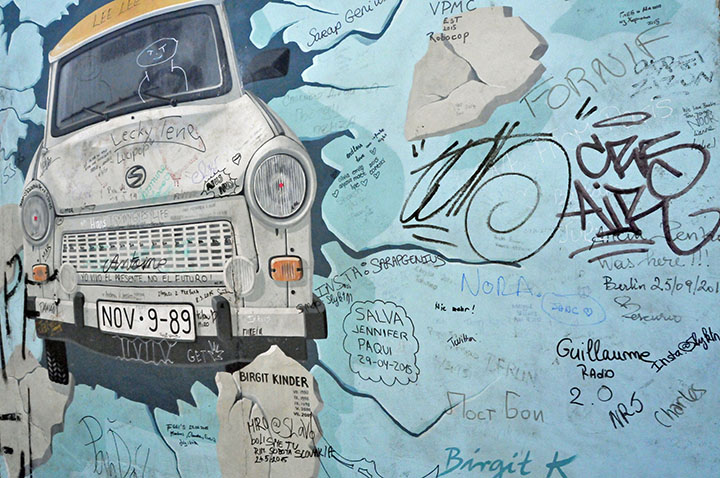
Commentary by Don Knebel
According to the history books, the Berlin Wall fell in 1989. Actually, a long section has continued to divide German citizens.
At the end of World War II, the Soviet Union controlled what became East Germany, and the United States, England and France controlled what became West Germany. Berlin, located in East Germany, was divided between East and West. On August 13, 1961, East Germany erected a fence encircling West Berlin to prevent its citizens from defecting. The fence soon became a 12-foot high concrete wall, patrolled by armed guards.
On November 9, 1989, East Germany announced that the border would be opened, and thousands of East Berliners crossed into West Berlin without resistance. Artists soon began painting celebratory images on a section of the wall’s gray eastern side along the Mühlenstraße. Eventually, 118 artists from 21 countries had created 105 brightly painted murals.When the government removed the wall in 1990, a 1.3-kilometer-long section containing murals was preserved as the East Side Gallery. One of the most popular images showed an East German car smashing through the wall.

Over time, the images in the East Side Gallery were defaced by graffiti and faded by the elements. In 2009, to mark the 20th anniversary of the wall’s collapse, the government of Berlin offered 3,000 euros to the artists to recreate their works. Some artists, including the painter of the car, accepted the offer. Others refused, considering the offer insultingly low. The government then whitewashed the works of those who refused the offer and threatened to hire other artists to recreate the original images.The threats led to a suit in 2011 by 21 artists against the city, claiming copyright infringement and demanding compensation for the destruction of their works. The suit was somehow resolved, and the East Side Gallery continues to attract visitors from around the world.




